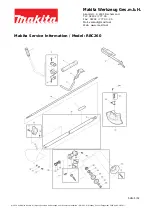
5
English
Thank you for placing your trust in our company by purcha-
sing the temperature-controlled WELLER W-series soldering
irons. Production was based on stringent quality require-
ments which guarantee the perfect operation of the device.
1. Caution!
Please read these Operating Instructions and the attached
safety information carefully prior to initial operation. Failure
to observe the safety regulations results in a risk to life and
limb.
The manufacturer shall not be liable for damage resulting
from misuse of the machine or unauthorised alterations.
The temperature-controlled WELLER W-series soldering irons
corresponds to the EC Declaration of Conformity in accor-
dance with the basic safety requirements of Directives
2004/108/EC and 2006/95/EC.
2. Description
The temperature-controlled WELLER W-series soldering irons
are suitable for a broad range of demanding soldering appli-
cations on electrical components with extremely high heat
sensitivity and are therefore ideal for use in industrial pro-
duction and for maintenance work on electrical appliances.
The industrial soldering irons of the W series have a solidly
constructed heating element and a wide selection of
“Longlife” soldering tips. The various power classes 60 W,
100 W, and 200 W provide the solution to a multitude of dif-
ferent soldering tasks. Temperature is controlled according to
the WELLER Magnastat principle.
If the tip is cold, the permanent magnet is attracted by the
ferromagnetic temperature sensor. This actuates the switch.
As the sensor approaches the Curie point, it loses its ferro-
magnetic properties and can no longer hold the permanent
magnet. The magnet is released and the switch returns to its
off-position (the power supplied to the heating element is
interrupted). If the tip cools slightly, the temperature sensor
attracts the permanent magnet and power is supplied once
again. The temperature sensors (Magnastats) have an extre-
mely narrow distribution of switching temperatures and are
not subject to any wear resulting from ageing or material
fatigue.
An additional advantage of this design is that the soldering
iron is switched off when the tip is changed. The heating ele-
ment cannot therefore burn out if the soldering tip is remo-
ved.
Table: Soldering tips 21 + 22.
3. Commissioning
Bend the soldering iron stand using the enclosed bending
template. Place the soldering iron in the safety stand.
Ensure that there are no combustible objects in the
immediate vicinity of the soldering iron. Check whether the
mains voltage matches the connected load of the soldering
iron. Insert the mains plug of the soldering iron into the mains
socket. When the necessary heating-up time has elapsed,
wet the soldering tip with a little solder. You can then begin
soldering.
Fig.: Bending instructions and bending template see
page 23 + 24.
4. Important
Do not allow the soldering tip to become seized up.
Applying a thin layer of graphite to the end of the soldering
tip and frequent withdrawal of the soldering tip prevents
unwanted seizing up. The soldering tip should be cleaned
using a water-soaked cleaning sponge. When the soldering
iron is not in use, always place the soldering iron in the
original stand. Ensure that the soldering tip is well tinned
during breaks between soldering.
Do not pick the heating element up using pliers or tap it
clean. Attaching the sleeve nut by hand (when the soldering
iron is cold) is sufficient to secure the soldering tip.
5. Scope of Supply
Soldering iron
Stand
Operating instructions
Safety Information
Subject to technical change without notice!
See the updated operating instructions at
www.weller-tools.com.
Technical Data
Voltage*
Power output
Protection class
Standard tip (temperature)
W 61
230 V AC
60 W
I
CT5B7 (370°C)
W 101 230 V AC
100 W
I
CT6E7 (370°C)
W 201 230 V AC
200 W
I
CT2F7 (370°C)
* also available as 120 V model
Содержание w series
Страница 28: ...23 Bending Instruction ...
Страница 29: ...24 Bending Template ...











































